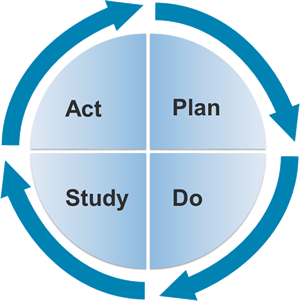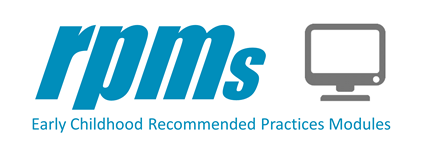For Instructors: RPM Learning and Improvement Framework
For Instructors: RPM Learning and Improvement Framework
In this module, you will experience a strategy called the PDSA cycle (Plan, Do, Study and Act) that will help learners learn about, implement, and make improvements to their use of the DEC Recommended Practices related to interaction. The three questions that are central to the PDSA cycle are:
- What are we trying to accomplish?
- How will we know if the change is an improvement?
- What changes can we make to our practice that will result in an improvement?
| Plan | In Plan, leaners will consider why we need to focus on interaction practices, and will acquire and apply knowledge on interaction practices via self-guided interactive activities. |  |
| Do | In Do, learners will have the opportunity to tie it all together in a scenario-based interactive activity. In addition, leaners will have opportunities to try out the practices in either classrooms, practicum placement, or through role-playing activities. | |
| Study | In Study, learners will be introduced to tools and strategies that can help them know if the change is an improvement. | |
| Act | Then, in Act, leaners will consider what changes they can make that will result in an improvement in their practice. To make optimal use of interactional practices, the Study and Act phases are best used with guidance from you...the instructor, coach, or director. However, if working self-paced, leaners can still benefit by using the evaluation tools in Study to reflect on their own practice. Then the action plan (and other supplemental resources) in Act help leaners make actual improvements, as well as dive deeper into the practices. | |
|
Learn more about the PDSA cycle on the Active Implementation (AI) Hub website: |
||
So, each of the modules developed by the RPM project
is organized in the following way:
| Plan | Identify a challenge, learn about the multiple sources of evidence, strategies, and outcomes that will be monitored. This phase of the learning is divided into five sections:
|
| Do | Carry out the practices to address challenges:
|
| Study |
|
| Act |
|
